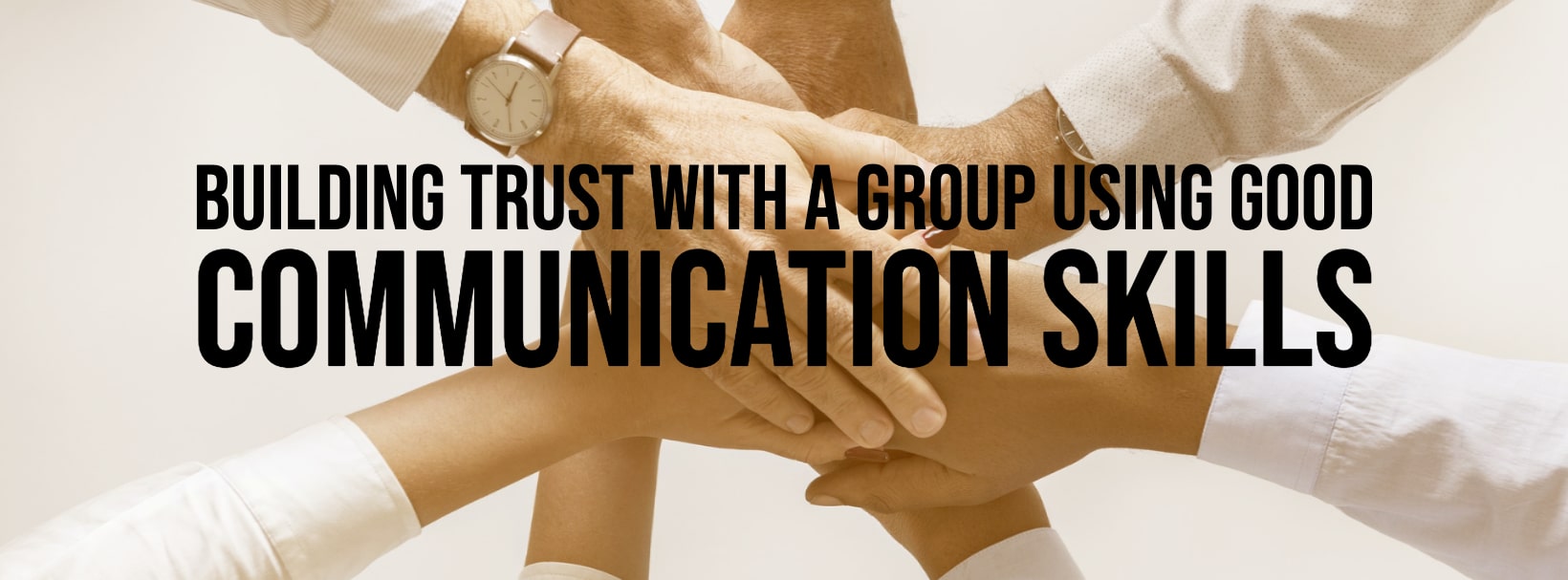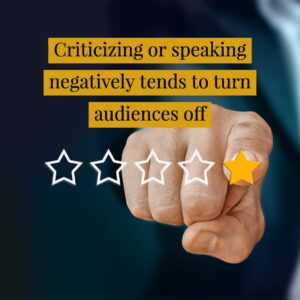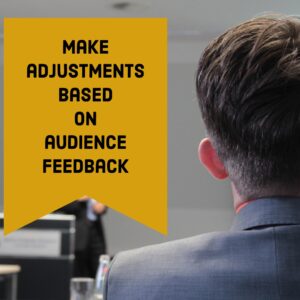
When you stand up to speak in front of a group, yes, you want to appear confident. However, it is equally important to have the ability to build trust and rapport with your audience. Your audience will not believe you unless they first trust you. In this session, we are going to give you a few, simple communication skills that will help you build solid trust with your audience. Incidentally, these same skills will help you build trust and rapport within any relationship.
This is part three of our series on Improving Communication Skills. In part one, we talked about how a great communication coach can help you improve your communication skills more quickly. Last week, we showed you a few simple things that you can do to shut down a heckler or someone who is peppering you with negative questions. Next week, we will cover a few ideas that will help you avoid disagreement and resolve conflicts. In the final sessions, we will show you how to use your words to gain enthusiastic cooperation from your audience.
Part 3: Improve Your Communication Skills and Gain Trust and Rapport.
Avoid Being Critical If at All Possible.
No one likes to be criticized. And certainly, no one likes to be criticized in public. One of the best books ever written about dealing with people is How to Win Friends and Influence People by Dale Carnegie. (If you have never read the book, click the link and get a copy ASAP. It is the best $12 you will ever spend.) In the first chapter of the book, Carnegie talks about a gangster in New York who is pinned down by the NYPD in his apartment. He had just committed murder.
The people in your audience are the same way. The more critical we appear when we communicate with others, the more likely we are to turn off our audience. The analogy that I like to use is that every single person that you meet has a “relationship bank account” with you. We can either make deposits into that account or we can make withdrawals. The more positive the account, the more that the person will like you. So, instead of being overly critical, be positive. Your audience will appreciate it.
Does that mean that you can never criticize when you present? Heaven’s no. Just remember that in the bank account, it takes multiple deposits to make up for a single withdrawal. So, use your criticism sparingly.
Look at Things from the Audience’s Perspective.
This is one of the things that we spend a tremendous amount of time teaching in our presentation skills seminars. We do this because it is so critical to public speaking success.
Put yourself in the shoes of the audience member. Identify the problems that they have and that you can help them solve. Then design your presentations around those solutions.
Smile More.
When we are nervous, we don’t smile as much. When we don’t smile, people don’t like us as much. One of the best tips that I can give to a nervous speaker is to look for a friendly face or two in the audience and smile just before you start your presentation.
By the way, this isn’t easy for some of us. For about half the population of the world, (me included) our neutral expression can be perceived by others as being negative. When people see me hard at work, they often describe me as wearing a frown (even when I’m happy). So, if I want to make a positive first impression, I have to purposefully set out to smile. If you find this to be the case for you, do it. It pays off with big rewards. Smiles are contagious.
Name Drop Audience Members to Get Them Involved in the Presentation.
People love to hear their own name. I often use this technique when I am only speaking for a short time, and I need to build that trust and rapport quickly. I will insert the name of an audience member into the presentation. For instance, before I go on stage, I will network with the group a little to find out exactly what they they want and expect from the presentation. I remember the responses that the group gives me.
I will often do this with the natural leaders in the room. They are easy to spot. They are the people that everyone crowds around at the beginning of the meeting.
Listen to Your Audience and Make Adjustments as Needed.
Early in my speaking career, I think this particular tip was the thing that made me such an effective speaker. Because of the way that I designed my presentations, it was really easy to customize the content on the fly based on interaction from the audience. (By the way, this is the technique that we teach our class members as well.)
A few years ago I was co-teaching with one of my senior instructors, Ellen, who is based in Detroit. She was the lead instructor, so I was just there to help. She arrived at the location hours before setup was to begin and she sought out the most senior executive that was going to be attending her class. The she asked him question after question. Each time, she was increasing her understanding of exactly what the executive was expecting from her. I was amazed. A few hours later, she wove each and every item that the executive brought up into her delivery. At the conclusion, the executive sought her out and thanked her over and over for providing the perfect program for his group.

The funny thing was that, once she said it, it all came flooding back to me. I used to do that with every single presentation. Over the years, though, I had gotten into a bad habit. I guess that I had begun to believe that I had all of the answers. That day, though, I got back to my roots. I started focusing way more on my audience. When I did, my company almost doubled within a single year.
Focus on your audience. Make adjustments t help them get what they want. They will love you.

